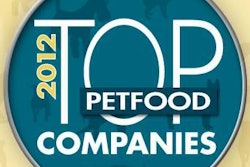If you are new to the petfood industry -- or work in another function besides dry petfood production and need to learn much more on that subject -- one of the best ways is by attending the annual Feeds and Petfood Extrusion Short Course at Texas A&M University in College Station, Texas, USA. The course, just concluding its 22nd edition, offers a nearly week-long immersion into grinding, mixing, extruding, drying, cooling and coating of dry petfoods and feeds, combining classroom sessions by industry experts with live demonstrations on machines designed to do all those petfood production steps.
The short course is part of the Extrusion Technology Program within the Food Protein R&D Center, directed by Mian Riaz, PhD, at Texas A&M. Dr. Riaz is well-connected in the industry and, together with his staff, puts together a first-rate program that attracts participants from around the globe: 15+ countries this year.
Besides diving into the details of all phases of dry petfood production, the course also includes information on ingredients (especially ones that help promote product quality and safety, such as antioxidants), petfood categories and the overall industry. Each year Dr. Riaz invites Petfood Industry to attend and present on the global petfood market, and this year I was fortunate to present there for the third time.
I was impressed with the participants and the organizations they represented -- from industry giants (both manufacturers and suppliers) to smaller, niche companies -- as well as the insightful, spot-on questions they asked of me and other speakers. It made me feel more positive than ever about the state and future of our industry.
I was also encouraged seeing some of the countries represented, including from established petfood markets like the US, Canada and Australia, rapidly rising stars like Brazil and up-and-comers (at least in terms of petfood) like Argentina, Chile and Israel. Their presence validated some interesting data from Euromonitor that I included in my presentation:
- The Brazilian petfood market is growing so quickly, it will very soon overtake Japan as the second largest petfood market worldwide. (In fact, that might have even happened this past year, as Japan, which had been experiencing slow to no growth in petfood for several years, declined after the terrible disasters it suffered in March 2011.)
- While Brazil will still be a distant second to the US -- Euromonitor figures from spring 2011 projected the US to be at US$23 billion by 2015, with Brazil at US$5.8 billion -- it will still have leapfrogged not only Japan but also other long-established petfood players like the UK, Canada, Germany and Australia.
- Australia, however, is more than holding its own: The Australasia region grew 4.59% in petfood sales in 2011, spurred by sales of premium cat and dog food, which represented 49% of the market in that region. Euromonitor projects Australia will still be the 10th largest petfood market in 2015, at US$1.7 billion in sales.
- While the dog food category reigns in much of the world, that is not the case in Europe, where cat food rules. That's true in both the developed but now slowly growing markets of Western Europe as well as the small but rapidly rising ones in Eastern Europe.
- Cats are also king in Saudi Arabia, where 43% of 96 million cats owned there eat commercial cat food (which grew 6.7% in 2010, though reaching only US$21 million in sales). Euromonitor pegs Saudi Arabia to be the second fastest-growing petfood market by 2015, at 9.8% annual growth, yet hit only US$28 million in overall sales that year.
- Dogs, by comparison, number less than 35 million, a figure that has not really grown at all in the past several years -- probably because Saudi Arabia is a Muslim society where dog ownership is not popular. The same is true in growing petfood markets like Malaysia, Indonesia and Morocco, where pets such as birds, fish and reptiles are more popular and even have their own premium, breed-specific foods.
- One of the reasons behind Western Europe's slow growth (just 1% in 2011) is the market share grabbed there by private-label petfoods: nearly 20%. The share is even higher in individual countries such as Germany (35%) and Austria (28%).
- In Eastern Europe, the rapid growth of petfood -- nearly 12% for the region in 2011 -- is projected to continue because there are still so many pets not yet eating commercial petfoods. The percentage hits 20% only for dogs in Slovakia and cats in Russia; it's 15% or less (mainly in the single digits) in most other Eastern European countries. But there's so much potential: Russia, for example, has 12.5 million dogs and 18 million cats, according to the European Pet Food Industry Federation.
- In fact, Euromonitor predicts four Eastern European countries -- Russia, Romaine, Ukraine and Poland -- will be among the 10 fastest growing petfood markets by 2015, with annual growth rates of 7.5% for Poland to 8.7% for Russia.
- Speaking of growth potential, China has 150 million registered cats and dogs, yet only 2% are currently fed commercial petfoods. Euromonitor projects China to grow 7.7% a year and be the seventh largest petfood market worldwide by 2015 (though still at only US$476 million in sales). Other high-flying Asia petfood markets include India (13.8% growth a year, for the top spot in growth but still only tiny sales, US$82 million by 2015) and Thailand (8.3% growth a year, fourth fastest growing, US$456 in sales by 2015).
It all goes to show that when it comes to petfood, there's truly a world of opportunity out there.
















